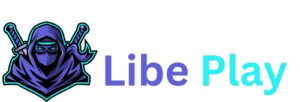SCORM Recordsdata Per Language
It sounds simple: translate textual content, swap media, export new SCORM and add to the LMS. However for studying builders, this technique can insidiously double workload, balloon bills, and add complexity to upkeep when growing multilingual eLearning programs. Allow us to learn the way this impacts the eLearning growth course of and the way Educational Designers and builders can construct extra scalable multilingual options.
1. Improvement Overhead: Time, Instruments, And Model Management
Translation And Localization Bottlenecks
- Every course replace—be it a brand new check, picture, or compliance modification—means rebuilding each language translation. Builders have to repackage, re-test, and re-upload every file manually, slowing iteration cycles down.
- Localization groups should deal with language-specific belongings (audio, video, subtitles, textual content on-screen), all of which require developer intervention for each SCORM output.
Authoring And SCORM Upkeep
- Builders usually spend hours reconfiguring manifests, adjusting LMS monitoring, and verifying interactions for every model.
- Every language turns into its personal “mini-project,” growing QA and LMS testing cycles for builders and reviewers alike.
Storage And Deployment Challenges
- Sustaining a number of SCORM variations consumes additional repository area and LMS bandwidth. Builders should additionally keep constant file constructions throughout all variants to keep away from confusion.
2. Oblique Improvement Prices: Complexity And Threat
Model Drift Throughout Languages
- When builders handle a number of SCORM outputs, updates could not roll out uniformly. Learners in numerous areas would possibly entry outdated variations—a difficulty that displays poorly on each L&D and compliance groups.
Larger Assist Load
- Bugs distinctive to at least one language model usually require developer-level debugging.
- Mismatched SCORM settings could cause inconsistent LMS monitoring or completion reporting—draining growth and help sources.
Scalability Roadblocks
- For eLearning builders, each extra language means new authoring, QA, and packaging duties. As multilingual demand grows, sustaining parity throughout variations turns into unsustainable.
3. Affect On Studying Expertise
Delayed Rollouts
- Learners could wait weeks for up to date variations of their language as a result of builders are busy rebuilding a number of SCORMs.
Inconsistent Studying High quality
- Variations in navigation labels, captions, or UI layouts throughout variations can confuse learners and break design consistency.
- With out unified growth workflows, accessibility components (alt textual content, transcripts, captions) could range in high quality from one language to a different.
Smarter Methods For Creating Multilingual eLearning
Create One Course—Publish in Many Languages
New authoring software program allow builders to construct a single SCORM bundle with language alternative controls. This technique retains the course logic centralized however saves the translations as modular sources—making it a lot easier to get constant outcomes throughout languages.
Sponsored content material – article continues under
Trending eLearning Authoring Instruments
Externalize Textual content And Media Property
By sustaining textual content, captions, and UI labels in exterior useful resource information (e.g., XLIFF, JSON, XML) the SCORM could be revised by builders when it comes to translations with out recreating the entire SCORM. This methodology facilitates faster updates and improved collaboration between localization groups and Educational Designers.
Leverage LMS Localization Options
Many LMS platforms help multilingual UI components, notifications, and even course titles. Builders can deal with content-level localization quite than duplicating total packages.
Automate QA And Model Management
Integrating model management (e.g., Git, SVN) and automation instruments helps eLearning builders monitor adjustments, rebuild multilingual programs effectively, and forestall model drift. Automated testing scripts can examine for damaged hyperlinks, lacking captions, or inconsistent manifests throughout languages.
The Improvement ROI
Framing the problem from a growth perspective helps stakeholders perceive the enterprise case:
- Diminished workload
For eLearning builders: fewer rebuilds and handbook packaging duties. - Sooner updates
Throughout all languages when regulatory or content material adjustments happen. - Constant learner expertise
Throughout locales, enhancing high quality and engagement. - Decrease long-term upkeep prices
Enabling groups to scale international studying applications easily.
Conclusion
For eLearning builders, having separate SCORM information by language could make a easy localization undertaking right into a upkeep headache. The true potential is in rethinking growing multilingual eLearning design—embracing modular, automation-centered design ideas that simplify localization, assure model consistency, and protect high quality at scale.
By means of the implementation of centralized content material fashions, LMS localization capabilities, and automation platforms, growth groups are capable of bypass tedious SCORM packaging repetition to focus on what’s most necessary: the design of compelling, accessible, and environment friendly studying experiences for worldwide audiences. This unified method not solely streamlines content material supply but additionally ensures constant learner engagement and efficiency throughout all languages and areas.

